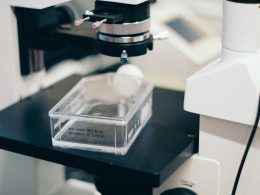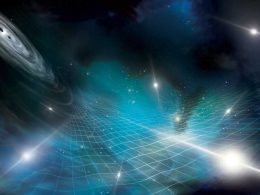In a groundbreaking discovery that pushes the boundaries of quantum physics, scientists have successfully detected quantum effects in collisions involving hydrogen and noble gases. This breakthrough sheds new light on the intricate behavior of particles at the atomic scale and has significant implications for our understanding of fundamental physical processes. Let’s delve into the details of this remarkable discovery and its potential impact on various scientific disciplines.
The study, conducted by a team of researchers from leading institutions around the world, focused on the interactions between hydrogen atoms and noble gases such as helium, neon, and argon. By employing cutting-edge experimental techniques and advanced computational models, the scientists were able to observe and measure the quantum effects that arise during these collisions.
Quantum mechanics, the branch of physics that describes the behavior of particles at the atomic and subatomic levels, has long fascinated scientists with its counterintuitive phenomena. One such phenomenon is quantum tunneling, which allows particles to pass through energy barriers that would be impassable according to classical physics. The researchers found clear evidence of quantum tunneling occurring during the hydrogen-noble gas collisions, challenging the conventional understanding of particle interactions.
The detection of quantum effects in these collisions opens up new avenues for exploring the intricate world of quantum physics. It provides experimental validation for theoretical models and computational simulations that incorporate quantum mechanics, allowing scientists to refine their understanding of particle behavior and interaction dynamics. Furthermore, this discovery contributes to the growing body of evidence supporting the concept of quantum coherence in complex systems, where multiple quantum states coexist and interact.
The implications of this breakthrough extend beyond the realm of fundamental physics. Understanding the quantum behavior of particles in collisions has important implications for diverse scientific fields. For instance, in the field of materials science, this discovery can enhance our understanding of chemical reactions, catalysis, and the development of new materials with specific properties. Quantum effects in collisions can also impact fields such as astrophysics, atmospheric chemistry, and plasma physics, where the behavior of particles at extreme conditions plays a crucial role.
Moreover, this discovery has potential applications in technological advancements. Quantum phenomena have long been recognized for their potential in developing technologies like quantum computing, quantum cryptography, and high-precision sensors. By gaining a deeper understanding of quantum effects in collisions, scientists can further explore the practical applications of quantum mechanics, potentially leading to advancements in these cutting-edge technologies.
The breakthrough discovery also highlights the importance of interdisciplinary collaboration in scientific research. The study brought together experts from various fields, including quantum physics, computational modeling, and experimental techniques. This collaborative approach fosters knowledge exchange, cross-pollination of ideas, and the integration of different methodologies, ultimately driving scientific progress.
While this discovery marks a significant milestone in our understanding of quantum physics, it also raises new questions and avenues for exploration. Scientists are now tasked with unraveling the specific mechanisms and underlying principles behind the observed quantum effects in hydrogen-noble gas collisions. Additionally, further investigations are needed to determine if similar quantum phenomena occur in other collision systems and under different conditions.
The ability to detect and manipulate quantum effects in collisions opens up a fascinating frontier for scientific exploration. It allows us to peer into the mysterious world of quantum mechanics and gain insights into the fundamental nature of matter and energy. As researchers continue to push the boundaries of our knowledge, we can anticipate even more groundbreaking discoveries that will revolutionize our understanding of the universe.
In conclusion, the recent detection of quantum effects in hydrogen and noble gas collisions represents a remarkable achievement in the realm of quantum physics. This breakthrough provides experimental evidence for the existence of quantum tunneling and validates the use of quantum mechanics in describing particle interactions. The implications of this discovery span across scientific disciplines,
from fundamental physics to materials science and technological advancements. As we continue to unravel the mysteries of the quantum world, we inch closer to harnessing its immense potential for future advancements and innovations.












